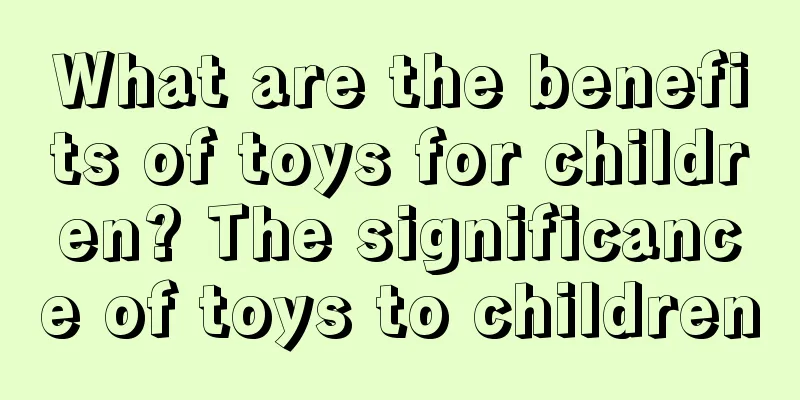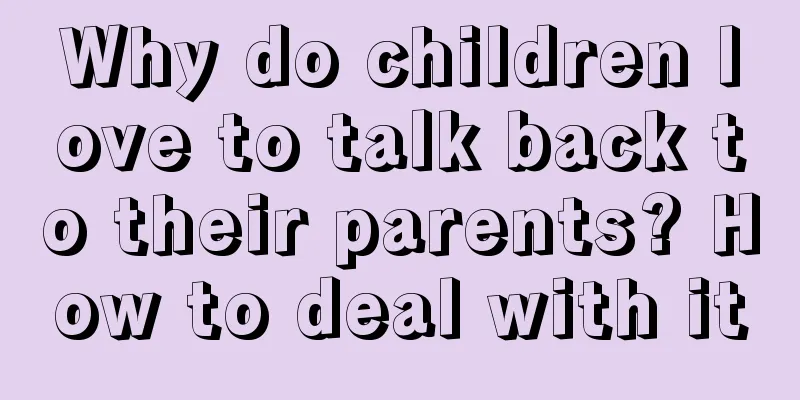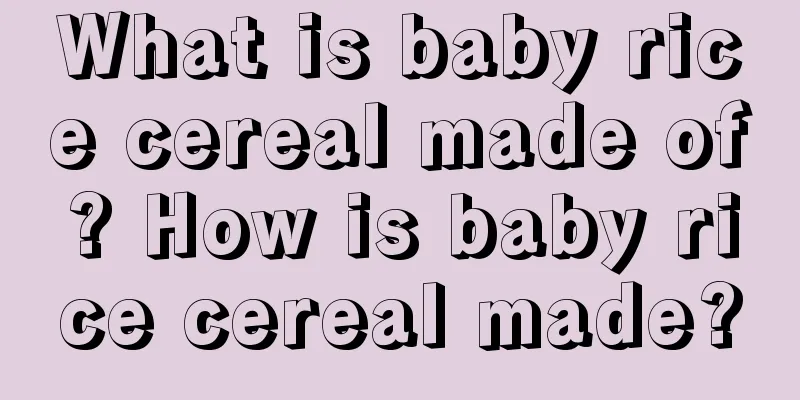What are the benefits of toys for children? The significance of toys to children

|
Toys are an indispensable part of children's growth. What is their significance to children? What are the benefits of toys to children? The significance of toys to childrenToys are like companions to children. Many families have only one child, and they love the child very much. However, many parents think that buying too many toys for their children is meaningless. In fact, this is a very wrong idea. Toys play an indispensable role in the growth of children. Many parents are busy with their careers, so they usually have less time to accompany their children. Therefore, toys are close companions to children. With the development of science and technology, the quality and uses of toys are becoming more and more diversified. Now many toy manufacturers have also realized the market for educational toys, so they have stepped up their efforts in research and development in this area. In addition to being good companions for children, toys are also good tools for them to learn. Good toys can improve children's hands-on ability, thinking ability, and develop their various cognitive abilities. At the same time, we should also pay attention to maximizing the functions of toys to avoid waste due to children not being suitable. In my opinion, toys play a very important role in the growth of children, especially in infancy. Toys attract children through their own charm. Therefore, the role of toys is extraordinary. What kinds of toys are there?In the game, children constantly experience success and failure, freedom and rules, process and results. While satisfying the fun of playing, they enrich the connotation of their personality. But toys have many types and functions. Different types of toys have different effects and functions on children. For a child who does not go to school, toys are their textbooks. Children learn about the world through toys. Therefore, in order for children to grow up healthily through games, parents should choose toys reasonably. The best toys are often the simplest, most common and cheapest, such as jigsaw puzzles, building blocks, balls, dolls, teddy bears, white paper, crayons, etc. (1) Educational toysFor example, stacking towers, cups, clocks, puzzles, etc. These toys can inspire babies to understand spatial orientation, sequence, overall parts, shapes, and time concepts. (2) Language toysEarly education machines, picture books, and nursery rhymes all belong to this type of toys, which can promote babies' hearing, language expression, and understanding and cognition. (3) Action toysThis is also well known to parents born in the 1980s. Small trailers, tool boxes, various carts, bicycles, etc. are all such toys, and they are also a type of toy that many children like. Action toys can exercise the baby's muscles and promote the coordination of various parts of the body. (4) Manipulative toysFor example, beads, clay, and building blocks are included in many Montessori teaching aids. They can promote better coordination between children's eyes and hands and make the baby's finger muscles more flexible. (5) Social imitation toysMany of the dolls, supermarkets, kitchens, and engineer role-playing toys that children like are of this type. They allow children to understand family life and social rules through imitation, and consolidate and expand their knowledge. (6) Science toysIt can guide children to learn to observe, compare, collect and analyze, and help them develop the habit of doing things by themselves and being realistic. In fact, for children, toys are not limited to those expensive and exquisite goods in shopping malls. A stone, a leaf, or even a basin of water and a simple cup or sand, as long as they can arouse children's interest and infinite imagination, are good toys. The role of toys in children's growth |
<<: How to store milk powder after opening the can How to store milk powder after opening the can
>>: What does oz mean in a milk bottle?
Recommend
Is oxygen inhalation good for the fetus during pregnancy? How can pregnant women improve fetal hypoxia?
Some pregnant women may feel shortness of breath,...
What does it mean when a pregnant woman dreams of fish? Does it mean the baby will be a boy or a girl?
After a pregnant woman becomes pregnant, she has ...
What should I eat to replenish my energy during a normal birth? Can I eat during childbirth?
Many people feel particularly nervous and painful...
What can't pregnant women eat if they have little amniotic fluid? What soup can they drink if they have little amniotic fluid?
Some pregnant mothers are told that they have too...
What are the effects of a baby grinding his teeth while sleeping? 5 effects to pay attention to
Many babies will show symptoms of teeth grinding ...
Is it really useful to go to a beauty salon to get a facial?
Nowadays, many beautiful women like to go to beau...
What should a husband do with postpartum depression? How long does it take for postpartum depression to heal?
After giving birth, women need time to adapt to t...
Will breastfeeding cause lactose intolerance? Will breastfeeding lead to overfeeding?
Breast milk is the best food for babies, but many...
What is the reason for itching below after childbirth? What should I do if it itches below after childbirth?
After giving birth, mothers can rest assured for ...
The child coughed and vomited. What is the reason for the child's cough and vomiting?
Children are usually very susceptible to illness,...
How to bathe your baby correctly? What is the water temperature for bathing your baby?
Giving your baby a bath is a difficult and arduou...
Teach your baby to eat by himself. Have you done these?
Generally, babies can learn to eat by themselves ...
At what fever level does a baby need to take antipyretics? How often should a baby take antipyretics?
Because antipyretics have side effects, many moth...
How to effectively treat severe postpartum hair loss? What are the causes of postpartum hair loss?
Many pregnant women will experience various physi...
What should I do if my baby is too light and growing slowly?
Many parents worry about their children being too...









